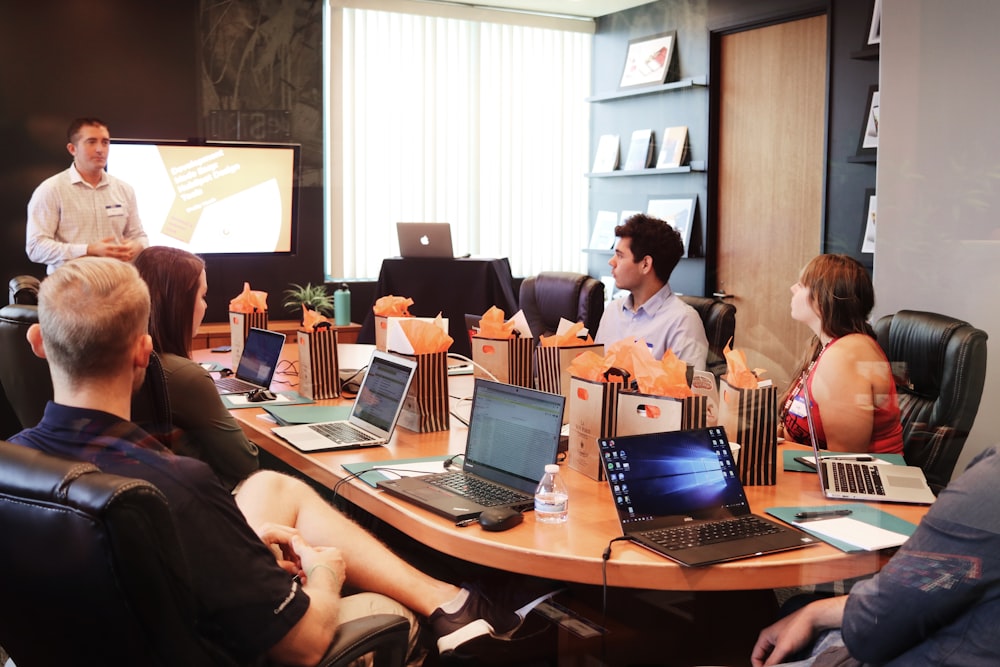Guide to Elevating Your Presentation Skills
Introduction:
- Importance of effective presentation skills in personal and professional settings.
- Overview of what the blog post will cover.
I. Understanding the Basics of a Good Presentation
Effective presentation skills are a blend of clear communication, audience engagement, and persuasive delivery. An effective presentation is not just about delivering information; it's about making that information resonate with your audience. This involves understanding the purpose of your presentation, whether it's to inform, persuade, entertain, or inspire.
II. Preparing Your Content
A. Research and Content Development
Start by conducting thorough research on your topic to ensure accuracy and relevance. Organize your findings into a clear structure with an introduction, main points, and a conclusion. Remember, the key to a good presentation is not to overload your audience with information but to present enough content to engage them thoughtfully.
B. Tailoring Content to Your Audience
Understanding your audience is crucial. Are they industry experts or laypeople? What are their interests and knowledge levels? Adjust your language, examples, and depth of content accordingly. Personalizing your content makes it more relatable and keeps your audience engaged.
III. Designing Your Presentation
A. Visual Aids and Slides
Visuals can enhance your presentation, but they shouldn't overwhelm your content. Use slides to complement your speech, not replace it. Keep slides clean and uncluttered, use high-quality images, and ensure text is readable.
B. Handouts and Supplementary Materials
Handouts are useful for providing additional information without cramming too much into your slides. They can include detailed data, references, or a summary of your presentation for the audience to take away.
IV. Mastering Verbal Communication
A. Clarity and Articulation
Speak clearly and at a moderate pace. Practice pronouncing difficult words and use pauses effectively to let key points sink in. Modulating your voice helps maintain the audience's interest and emphasizes important points.
B. Storytelling Techniques
Integrate storytelling into your presentation to make your message more memorable. A well-told story can illustrate complex ideas in a relatable way and create a lasting impression.
V. Non-Verbal Communication Skills
A. Body Language
Your body language speaks volumes about your confidence and engagement with the audience. Use open gestures, maintain a good posture, and move around the stage if possible to make your presentation more dynamic.
B. Eye Contact
Making eye contact builds a connection with your audience. It makes your audience feel involved and can give you non-verbal feedback on how your message is being received.
VI. Managing Presentation Anxiety
Feeling nervous before a presentation is normal. To manage this, practice your presentation multiple times. Familiarity with your content can significantly reduce anxiety. Deep breathing exercises and visualization techniques can also help calm nerves.
VII. Engaging Your Audience
A. Interactive Elements
- Incorporating Q&A sessions, polls, or interactive activities.
B. Adapting to Audience Feedback
- Reading the room and adjusting your presentation in real-time.
VIII. Utilizing Technology Effectively
- Leveraging presentation software and tools.
- Tips for virtual presentations and webinars.
IX. Handling Questions and Discussions
- Strategies for effectively addressing audience questions.
- Maintaining control of the presentation during discussions.
X. Practice Makes Perfect
A. Rehearsal Techniques
- How and why to practice your presentation.
B. Seeking Constructive Feedback
- The importance of feedback and how to use it to improve.
XI. Advanced Presentation Techniques
- Tips for storytelling, persuasive presentations, and more.
- Adapting to different types of presentations (informative, persuasive, motivational).
XII. Continuous Improvement
- Setting goals for ongoing skill development.
- Staying updated with the latest presentation trends and tools.
XIII. Conclusion
- Summary of key takeaways.
- Encouragement to apply these skills in various settings.
XIV. Additional Resources
- Books, courses, and other resources for further learning.










































